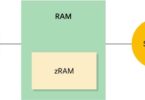Overcoming the drag which limits the efficiency
When trucks drive over long distances then the aerodynamic drag tends to gorge upon a huge amount of fuel as vehicle tries to overcome it. Another research has pointed out that the trucks running just a few meters apart from each other is better suited as the trucks present right in the middle tend to experience lesser drag which ultimately help in saving about twenty percent of the fuel.
This research team has developed a mathematical formula which helps in studying the effect of different scheduling policies which can help in limiting the fuel consumption along with delays to a great extent.
Getting scheduling right
Researchers have to work hard at coming up with a reliable scheduling polices for the vehicle platoons. A large number of scenarios were tried out wherein platoons were sent at different intervals like certain number of trucks were sent first and once they reached station then next batch of five or three trucks were sent out.
After aggressive try out researchers found that deploying platoons at regular intervals happened to be more sustainable and efficient in the long run this helped in saving more fuel.
Future application of this research
Currently researchers are working with trucking companies based in Brazil who are showing interest in utilizing the research in order to enhance their truck efficiency and to lower the fuel consumption. This platoons model will certainly help companies in understanding the commute delay along with the energy tradeoff utilizing the mathematical formula created by the researchers.
Lead researcher Karaman has stated that their research model will help in building new transportation system which will be ultimately help in reducing the costs to significant level and it can be actively utilized for the conventional modes of transport as well.







